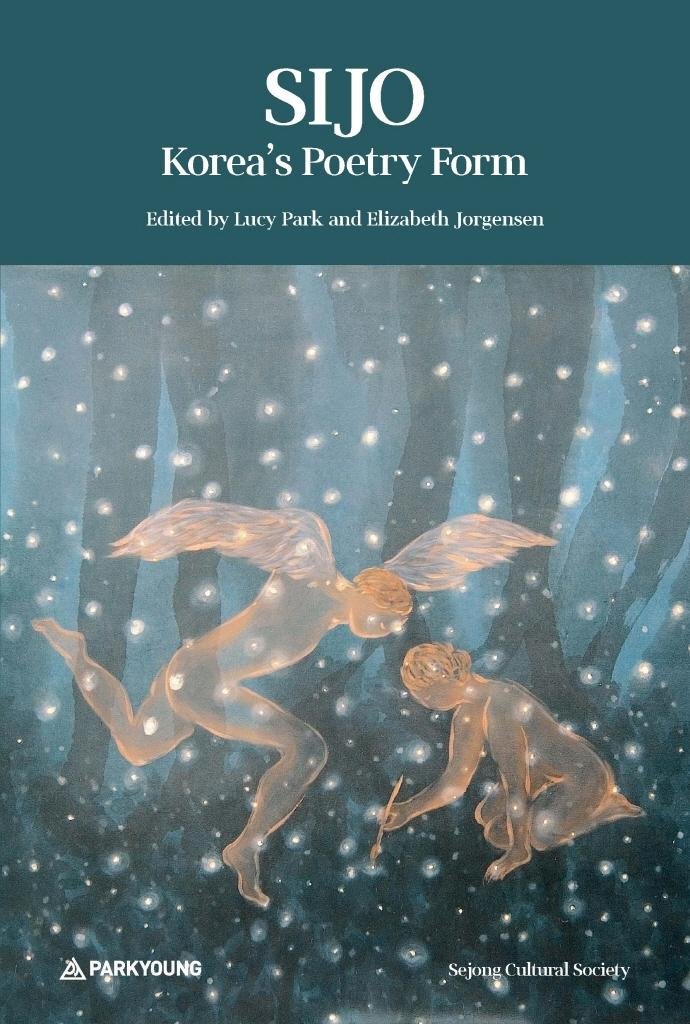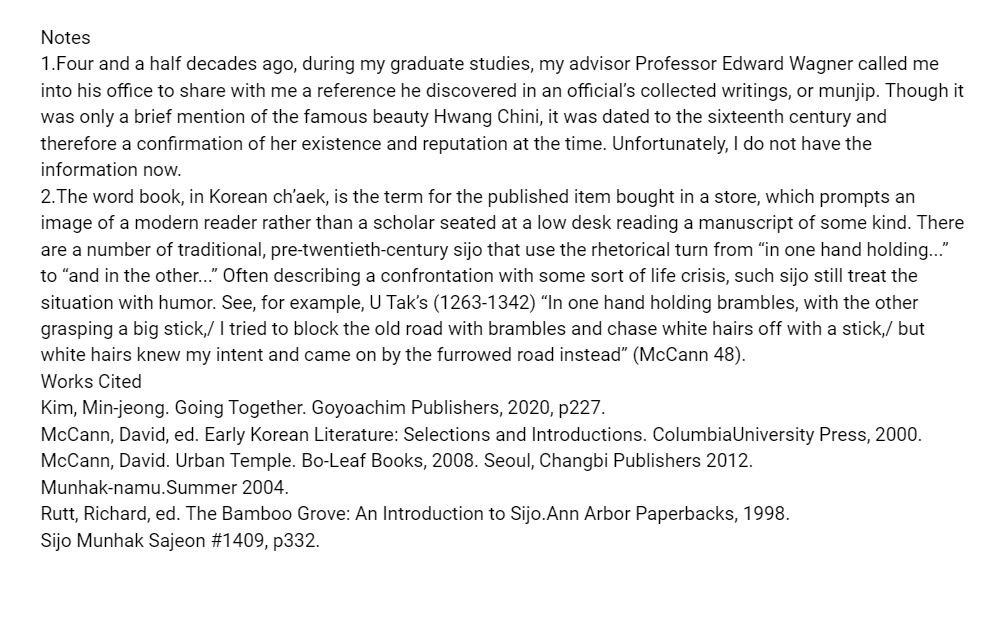Sijo (시조) Korea's Poetry Form (영문판) English Edition
ISBN 9791130314099
Language English
N. of Pages 274쪽
Size/Weight 151 * 225 * 22 mm / 407 g
Author/Editor Lucy Park , Elizabeth Jorgensen
Publisher 박영사
Date of Publication 2022년 02월 20일
Country of Origin Korea
ISBN 9791130314099
Language English
N. of Pages 274쪽
Size/Weight 151 * 225 * 22 mm / 407 g
Author/Editor Lucy Park , Elizabeth Jorgensen
Publisher 박영사
Date of Publication 2022년 02월 20일
Country of Origin Korea
ISBN 9791130314099
Language English
N. of Pages 274쪽
Size/Weight 151 * 225 * 22 mm / 407 g
Author/Editor Lucy Park , Elizabeth Jorgensen
Publisher 박영사
Date of Publication 2022년 02월 20일
Country of Origin Korea
책 소개
As a gift that we would like to give to everyone in the world who love Sijo, we are truly grateful and happy that the Korea Sijo Association has compiled a collection of Sijo in Korean and English.
We will present a great enlightenment to those who have not yet known how deep history Sijo has brought to us, how mysterious a poem that touches their heart it is, and how beautiful a literary work written in Hangeul.
We, the Korean Sijo Association, have their roots in a poem called
Hyangga in the Shilla Dynasty, about 1,400 years ago, and have properly inherited the legitimacy passed down 700 years ago in the same Sijo form as today. It is the 10th anniversary of the founding of a group of Sijo writers, formed to make efforts to globalize Sijo in the new era of the global village.
We are publishing a collection of Sijo in English so that people can read and learn Sijo widely.
Our hope is that this book will be widely used so that more people will know 'Sijo' correctly and use it effectively. Of course, we would like to continue to provide a space for people studying Sijo for foreigners.
After hearing the news that the Sejong Cultural Society in Chicago, USA, has held the Sijo Contest every year since 2008, and it is developing into a successful contest with over 1,500 participants from all over the United States, our association also had great hopes. We feel infinitely grateful that professor D. McCann, professor M. Peterson, and members of the Sejong Cultural Society are working harder to teach and spread Sijo.
To the members of the Korean Sijo Association, who contributed good works to the publication of this book of Sijo and paid a contribution to the publication, Professor Peterson who translated Sijo into English, and the Sejong Cultural Society for helping Americans participate. We hope that this publication of the Korean-English Sijo Collection will fulfill the role of a valuable seed for Sijo to expand its position into a new world culture. We hope that all those who learn and love Sijo will enjoy greater happiness. Thank you.
저자(글) 한국시조협회
The Brief History of Korea Sijo Association Corp..
2022 April: 10 Years History of the Korea Sijo Association Corp. and "Sijo Collection" in English version published.
2022 March: Revision of the Title Quarterly Publication of Sijo and Creation of the Logo of Korea Sijo Association
2021 April: National Assembly Passes Amendment to the Literature Promotion Act
2021 January: Sijo Webinar "The Present, Future and Globalization of Sijo" held between USA and Korea
2019 October: The Stone Monument to The Sijo Charter installed.
2019 October: The Sijo Film Documentary on Finding Hwangjini co-produced with Sijo Journal
2019 February: Declaration of the Charter of Sijo and the Code of Ethics and Enactment of the Society's Song
2016 December: Declaration of the Unification of the Sijo's Name and Form
2016 November: The Association was registered at the Ministry of Culture, Sports and Tourism.
2014 December: The Association has been converted into a Corporation.
2014 October: The Stone Monument of Origin of Sijo's Name installed.
2013 June: The Association Name changed to Korea Sijo Lover's Poets’ Association.
2012 December: The First Issue of Magazine Sijo Love published.
2012 April: Korea Sijo Love Movement Center was founded.
번역 Mark Arlen Peterson
문학가
마크 피터슨은 1987년 Harvard에서 동아시아 지역 연구와 동아시아 언어 및 문명으로 박사학위를 받았다. 그는 1983년부터 브리검영대학교의 교수로 재직하면서 아시아 연구 프로그램을 총괄했다. 브리검영대학교에서 한국사와 문학을 가르쳤다. 은퇴 후 그는 비영리단체 〈The Frog Outside the Well(우물 밖으로 나온 개구리)〉을 설립했다. 그는 시조를 비롯한 한국의 역사와 문화에 대한 다양한 주제를 다루는 유튜브 채널을 직접 만들었다. 그는 몇 편의 시조를 직접 썼으며, 현재 솔트레이크시티 근처에 거주하고 있다.
목차
■ Publisher’s Greeting
■ Prologue: About the Sijo
Part 1 (about 700~ 1919)
Though I Die, and Die again / Mongjoo Chung
Punch a Hole in my Chest / Anyeol Byun
The Sun Shines Bright through the East Window / Guman Nam
I Return to the Five Century Capital / Jae Gil
I Miss My Dear One Who Has Gone / Bangyeon Wang
The Night Falls on the Cold Autumn River / Prince Wolsan
The Blue Hills Are My Desires / Hwangjini
Scops Owl! Crying on a Deserted Quiet Hill / Hyogwan Park
A Lover Seen only in Dreams / Myeongok
It’s Good for Me that We Don’t Do / Gyeryang Byun
You Should Stay. Yet You Will Go? / The King Sungjong of Joseon Dynasty
This Parting Is such Sadness / Duhyang
Part 2 (about 1920~2022)
Sitting Alone / Namseon Choi
Spring in Wartime / The first Korean President-Syngman Rhee
The Turtle Ship / The 5th~9th President - Chunghee Park
Search / Cheondeuk Pi
The Village Where the Apricots Bloom / Hou Yi
The Wind Was also Chilly / Byunggi Lee
Maple Leaf / Jonghwa Park
With a New January / Gyuil Ha
Ohryukdo / Dudong Go
Dream / Gwangsu Yi
One Day / Sangok Kim
Early Spring / Gijae Kang
Children / Unja Kang
Spring Light / Jaeil Kang
Flower Wind / Chunghoe Gu
The Maid of Autumn / Ohak Gwon
Drawing a Drawing of a Pine Tree / Taekbeom Gwon
Pinetrees by the Hajodae Seacoast / Gwangsu Kim
A New Spring / Giwon Kim
The Farmer and the Bull / Gyeongu Kim
Looking at the Ridgeline / Gwirye Kim
Water Lily / Daleho Kim
Comma / Bubae Kim
Breaking the Silence / Sagyun Kim
Stars / Seongdeok Kim
The Spirit of the Poet / Seongsu Kim
Pueraria Lobata / Sukseon Kim
A Bunch of Magnolia Flowers / Sukhee Kim
Morning Time / Yeonsu Kim
The Empty House / Yeongae Kim
The Day of a Gentle Breeze / Yeongjin Kim
A Picture of a Poem / Okjung Kim
A Weed Seed Blew this Way / Wolhan Kim
Corona / Yunsung Kim
The Sound of the River / Euisik Kim
Painting in Black Ink / Ilyeong Kim
Heart / Eunja Kim
On a Spring Day / Jaebun Kim
Tree Rings / Jaehwang Kim
Self-portrait / Jeongi Kim
Love / Jenghee Kim
Lamentation of the Balsam Flower / Jiun Kim
Reunion / Cheolhak Kim
Memory of June / Taegyun Kim
The Ear of a Needle / Taeook Kim
Chupungnyeong / Taehee Kim
You, I Long for / Hyeonja Kim
Broken Heart / Hwain Kim
The Flower Shop / Heungyeol Kim
Waves Are My Faith / Jaeyeon Roh
Sea Bells 3 / Hyeonja Ra
Eyebrow Moon / Sukja Ryu
Dharma Song / Sangcheol Mo
When I Close My Eyes / Bokseon Moon
Sleepless Night / Gyeonggyu Park
Longing / Giljung Park
The Banya Flower / Myeongok Park
Little Dream / Baehoon Park
Hwangjoga / Yongsu Park
Flowers Blooming on the Subway / Inseon Park
In April / Cheonggil Park
Student Soldier / Heonsu Park
Moonlit Donghaksa / Heono Park
May / Gyujeong Song
Pebbles / Gwiyeong Song
Pomegranate / Soohyun Song
Will / Gyejeon Shin
Youth / Dongyeong Shin
Starlight / Seunghwa Shin
Small Spring / Seongbo Shim
Making Winter Kimchi / Jaenam Shim
Ulleungdo Outing 1 / Byeongdu Oh
Azalea Blossoms / Seonghun Uh
A Crescent Moon 1 / Suhyang Uh
My Own Haven / Heewon Uh
Moon Night / Suyeon Won
Life Train / Yongu Won
Living / Sangyong Yu
First Love / Seongcheol Yu
The Camellia Road to Seonunsa Temple / Junho Yu
Honeysuckle flower / Seongho Yun
A Salt Field Made of Tears / Jaenam Yun
A Weed / Heeyuk Yun
The Power of a Raindrop / Kwansu Lee
A Crack / Kwang-nyeong Lee
A Tree in Winter / Dohyeon Lee
At My Library / Malyong Lee
A Farmer's Love of Poetry / Myeongyong Lee
Humble Hope / Myeongjae Lee
The Path of the Poet / Seokgyu Lee
New Year‘s Eve / Sujin Lee
The Rose / Soonhyang Lee
The Needle / Inhwan Lee
Dokdo Island / Ilhee Lee
Solitary Old Man / Jaeho Lee
Life / Taehee Lee
Muttering About Time / Hyeon Lee
The Snail / Heungu Lee
The Cricket / Mangyu Im
Millennium Crane / Byeongung Lim
Mother / Jaedong Im
Enlightenment / Kyeongjin Jang
Mugunghwa / Geumryeol Jang
Early Spring / Seongdeok Jang
Winter Hermitage / Seongu Jeon
Barley / Gweonsik Jeong
A Wound Deeper than a Wound / Jinsang Jeong
Three Chapters of Life / Gukseong Jo
The Horizontal Scale / Yeontak Jo
Anquish / Yeonghee Jo
My House / Cheolmuk Jo
The Fence of Maternal Love / Pyeongjin Jo
The Roof of the Palace / Gilja Jin
Today, too / Yeongho Cha
Beautiful Scenery / Yunbyeong Chae
Maple Leaves / Hyeonbyeong Chae
Evening Rain / Okhee Cheon
To the Sole of the Foot / Eunhee Choi
Arirang with My Love / Hotaek Choi
Sunberry / Sangcheol Han
The Red Golden Gate Bridge / Wonyeong Hyeon
Entering Nirvana / Ikhwan Han
Flower of Flowers / Yunseong Hong
Double Standard / Gilsin Hwang
Part 3 (Foreigner’s Works)
Translated into Korean by Jaeyeon Roh
On Sijo Writing / Lucy Park
How to Write Sijo / Mark Arlen Peterson
First Sijo: A Night in Andong / David McCann
My Darling / Larry Gross
Even Now / Elizabeth St. Jacques
Breakfast / Linda Sue Park
On Watching the Olympics / Mark Arlen Peterson
Long Wait / Victor P. Gendrano
Foggy Bridge / Chuck Newell
Senses / Elizabeth Jorgensen
Stars Sijos / Debra Woolard Bender
Sound of Winter on a Quiet November Morning / Lucy Park
■ Chief Editor's Note
■ Sijo Charter
■ The Brief History of Korea Sijo Association Corp.
책 속으로
About the Sijo
Sijo is the only surviving orthodox poem in Korea. Sijo has a history of about 700 years, and about 5,000 Gosijos (Old Sijos) have been handed down through records. The oldest Sijos handed down today are Woo Tak's 3 Sijos and Lee Jo-nyeon's 1 Sijo. Although there is no record of the date of the publication of these four Sijos, it is reasonable to regard the origin of the Sijo as the early 1300s, based on the dates of birth and death of Woo Tak and Lee Jo-nyeon.
On the other hand, there are opinions that the Sijos already existed before that, and there are claims that the history is more than 1,000 years, but the evidence is still weak.
Various forms and types of songs before the Sijo, including Shinga (god songs), Shaman songs, Gosi (old poetry), Folk songs, Hyangga (Silla dynasty songs), Sokyo (old folk songs of Goryeo period), Gyeonggi chega (nobles’ songs of Goryeo and Joseon period), and Han poetry (Chinese poetry). Although there were poems of the same name, they were all sung only by special classes such as nobles, commoners, or shamans, and none of the people enjoyed singing poetry together. And all of these were prevalent in one era and then disappeared.
Combining the views of various scholars on the origin of Sijo, Sijo has a point in common with each of the various poems presented above. In a word, it can be summarized as the best Siga(Old lylic) that is completely different from the previous types of Sigas and newly created by taking advantage of those Sigas evenly.




































